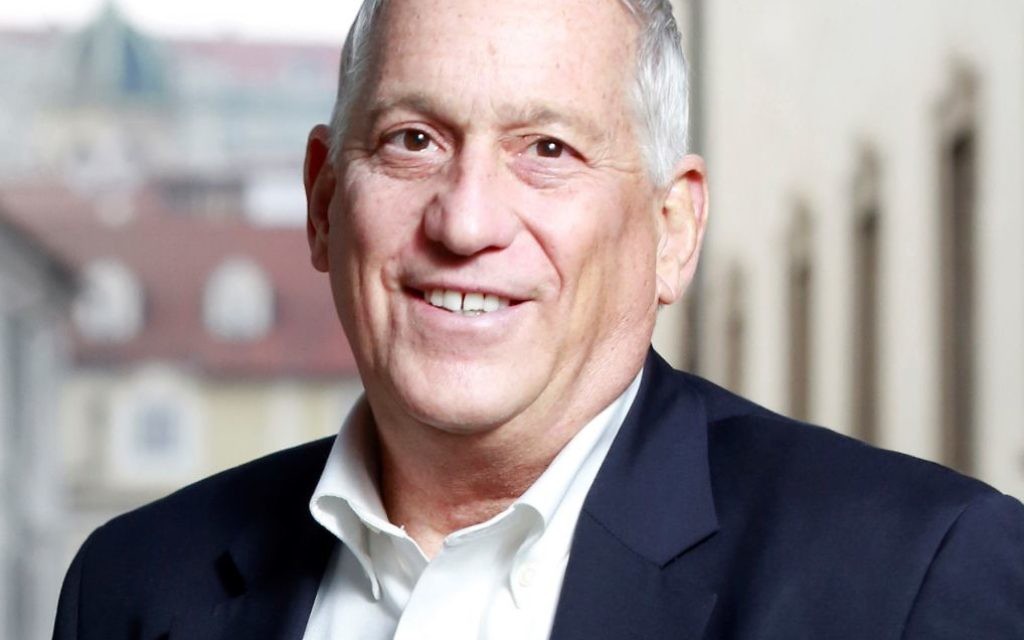‘Leonardo da Vinci’ Guides All of Us to Genius
Walter Isaacson recounts the story behind one of history's most famed artists and engineers.

Western civilization likely has never produced a more creative genius or a more challenging subject for a biography than Leonardo da Vinci.
Some know him for his detailed studies of human anatomy, exemplified by the Vitruvian Man drawing of a man in various poses within a circle. Others focus on his engineering ideas, from massive war machines to aircraft, all centuries ahead of their time. No one can overlook the artist who gave us the “Mona Lisa” and “The Last Supper.”
Leonardo died 498 years ago at age 67, and he still has a hold on popular imagination, from the conspiracy theories of Dan Brown’s “The Da Vinci Code” to the flights of fancy of the Starz TV series “Da Vinci’s Demons.”
Get The AJT Newsletter by email and never miss our top stories Free Sign Up
The challenge for Walter Isaacson, who closes the opening weekend of the Book Festival of the Marcus Jewish Community Center on Nov. 5, is to replace the Leonardo fantasies — he never built any of the machines he drew — with wonder at Leonardo’s limitless scientific, artistic and intellectual explorations without exhausting the reader who tries to follow wherever genius might wander.
As a biographer, Isaacson has chased creative genius from Benjamin Franklin to Albert Einstein to Steve Jobs, and he said in an interview that Leonardo represents the culmination of those books.
“Whether you’re a kid or a grown-up, you could relate to the passion of his curiosity,” Isaacson said. “He wants to be able to build portable bridges, and he wants to be able to describe the tongue of a woodpecker.”
That Leonardo did the latter but not the former makes him more human, Isaacson said. He pursued pure knowledge and perfection. Sometimes he made mistakes or lacked the math skills or simply couldn’t achieve the impossible, and he moved on to other challenges. Sometimes perfection was so close, as with the “Mona Lisa,” that he never could stop tinkering and improving.
That refusal to settle for less than his best and to be known as a craftsman who gets things done rather than an unsurpassed genius gained Isaacson’s admiration and led him to recognize 20 lessons from Leonardo. Often counterintuitive — procrastinate, get distracted, let the perfect be the enemy of the good — those lessons offer a way any of us can live more meaningfully and creatively. That is, more like the master.
“Studying Leonardo inspires us to be more creative, more observant,” Isaacson said.
His passion for Leonardo sometimes comes through more clearly than the Renaissance man’s passions, in part because it’s so difficult to conceive of anyone being as obsessive about as many things as Leonardo was. But Isaacson wants to convey the way Leonardo’s mind leapt about so readers can see the world the way he did, full of patterns, connections, beauty and possibilities.
“I think that it’s a shame that he never published his notebooks and treatises because the printing press had already come along. He could have added to the spread of knowledge,” Isaacson said. “But it made it possible for me to go around the world and look at all these notebooks and pull them together.”
This is not a book to plow through; it’s one to be savored and consumed in small bites like a gourmet tasting menu. Leonardo rewards patience and contemplation.
Fortunately, Isaacson and publisher Simon & Schuster have delivered a coffee-table-quality book at a standard book price. You can tell the difference from the book’s weight before you open it and see the difference heavy-stock, coated paper can make in reproducing nearly 150 images.
Isaacson said he pushed for the finest paper at a publisher’s meeting, and no one pushed back. “It’s Leonardo. He would want us to do that,” the writer said. “I think they realized this is a book people want to keep. …
There’s something that’s bad karma if you print a Leonardo masterpiece on low-quality paper.”





comments